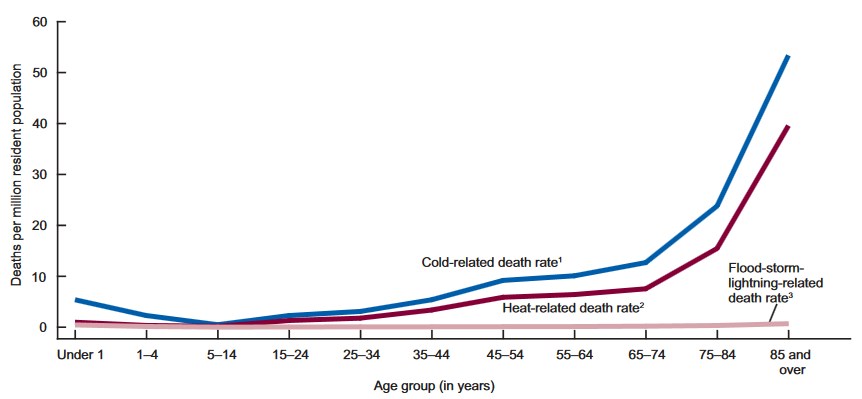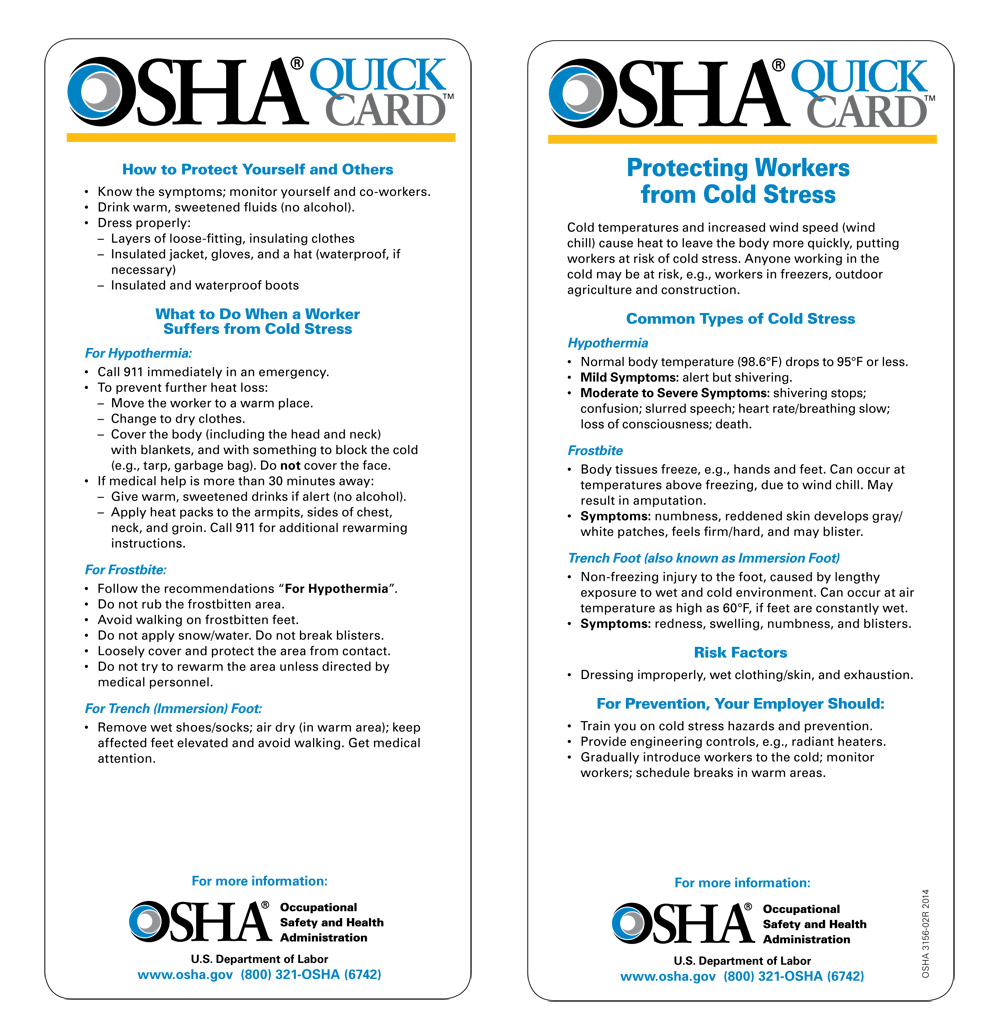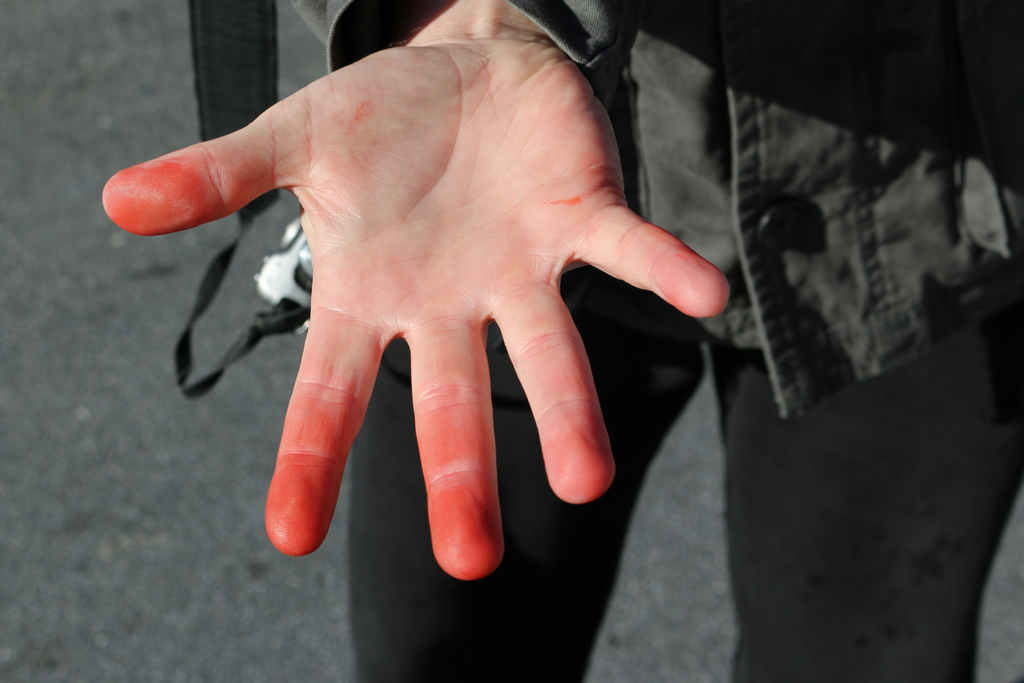Cold is an occupational health hazard for many types of workers. If your job requires you to work outside in cold weather, it’s even more critical for you to be not only prepared with the proper gear to keep you safe from the dangers of the job, but also with proper clothing to keep you safe from the dangers of the cold.
Although OSHA does not have a specific standard that covers working in cold environments, employers have a responsibility to provide workers with employment and a place of employment which are free from recognized hazards, including winter weather related hazards, which are causing or are likely to cause death or serious physical harm to them.
- Required by some states and companies in order to start employment.
- DOL Plastic Card Shipped Within 2 Weeks.
- Reg. Price: 10hr: $89 - 30hr: $189
- Enter Promo Code "osha15off" at Checkout
CDC Report: Cold Kills More People Than Heat
A report by the National Center for Health Statistics reveals that winter cold kills more Americans than summer heat. Each year, approximately 2,000 people die due to weather-related causes. Of that population, 63% of deaths are caused by exposure to cold and/or hypothermia, while only 31% are attributed to heat-related exposure such as heat or sun stroke.
Chart: Death rates for weather-related mortality, by age: U.S., 2006–2010 (CDC)

Types of Cold Stress
Like heat stress, employees affected by cold stress require medical attention. The CDC has identified the following types of cold stress:
- Hypothermia Occurs when the body is losing more heat than it can produce. An affected worker may shiver and seem tired or confused. As the condition worsens, shivering may stop. The worker’s pulse and breathing may slow, and his or her skin may become blue.
- Frostbite Occurs when body parts actually freeze. Often affects fingers, toes, nose, ears, chin and cheeks. The affected area may become pale or blueish and may be numb or tingly.
- Trench Foot Caused by prolonged exposure to moisture and cold, but not freezing, temperatures. The worker may experience numbness, tingling or redness. Blisters or bleeding may occur. Severe cases may lead to gangrene.
- Chilblains Caused by repeated exposure to cool temperatures above freezing. This condition affects the same body parts as frostbite. The affected area may be red and itchy. Blisters or ulcers may develop.
Types of Jobs at Risk for Cold Exposure:
- Airport ground personnel
- Athletes, especially on sidelines
- Auto repair and fueling
- Bus and taxi driving
- Construction and demolition
- Crossing guards
- Dairy farming
- Fishing and diving
- Ice making
- Logging
- Maritime
- Meat packing, fresh and frozen food
- Mining, oil, and gas drilling
- Police, fire, and emergency responders
- Postal and other delivery
- Pulp and paper
- Railroad and trucking
- Road repair
- Ski resorts and other outdoor recreation
- Snow and trash removal
- Utility repair
OSHA Cold Stress Card
OSHA’s cold stress card can serve as a reference guide to combat and prevent sickness or injuries related to cold weather. The reference card has some helpful tips:

Cold Weather Personal Protective Clothing & Equipment
Dressing properly is extremely important to preventing cold stress. Dressing properly for the cold depends on how long you’ll be outside, whether the conditions are wet or dry and how cold the temperature is. According to OSHA, wearing three layers provides the best protection for extended winter exposure.
When cold environments or temperatures cannot be avoided, the following cold-weather protective clothing and equipment helps protect workers against cold stress:
- Clothing: Wear at least three layers of loose fitting clothing. Layering provides better insulation.
- An inner layer of wool, silk or synthetic (polypropylene) to keep moisture away from the body. Thermal wear, wool, silk or polypropylene, inner layers of clothing that will hold more body heat than cotton.
- A middle layer of wool or synthetic to provide insulation even when wet.
- An outer wind and rain protection layer that allows some ventilation to prevent overheating.
- Clothing (Loose fitting) – Tight clothing reduces blood circulation. Warm blood needs to be circulated to the extremities.
- Face Covering: Knit mask to cover face and mouth (if needed).
- Head Covering: When it’s cold out, protecting your head is very important. A hat shields your ears from the cold and retains heat. The combination of a hat and headband or ear muffs will often work better than a hat alone because hats can easily rise up off the ears as workers move around.
- Gloves: No matter your job, if you’re working outdoors in cold weather, you should most definitely be wearing some sort of gloves, if not to protect your hands from your work, to protect them from the cold-related ailments such as frostbite.
- Socks: Wearing one or two pairs of thick socks is recommended if you want to protect your shoes. Having extra socks are preferred because socks tend to get damp during the day. The outer sock should be a larger size than the inner sock, to avoid extra compression.
- Footwear: Workers in cold weather also need to wear proper footwear protection. When the work involves walking in water, waterproof boots must be worn. Leather boots can be treated and waterproofed with special products that do not block the pores in the boot surface. The best-suited shoes are leather-topped boots with removable felt insoles.
- Worker Visibility: It’s important to make yourself visible during all seasons, but wearing reflective gear is especially critical in the winter months, as the hours of daylight are shortened. Since it’s likely you’ll be working in the dark, consider investing in reflective gear with electronic light-up features. Flip them on to be sure you’re seen at all times.
Additional Resources:
Cold Stress QuickCard Revised
Snow Removal: Falls and Other Hazards to Workers Removing Snow from Rooftops and Other Elevated Surfaces
OSHA Federal Regulations for PPE
This section highlights OSHA standards, Federal Register notices (rules and proposed rules), directives (instruction to OSHA staff), and letters of interpretation (official letters of interpretation of the standards) related to PPE.
General Industry (29 CFR 1910)
- 1910.94, Ventilation [related topic page]
- 1910.95, Occupational noise exposure [related topic page]
- 1910.120, Hazardous waste operations and emergency response [related topic page]
- 1910.132, General requirements (Personal protective equipment)
- 1910.133, Eye and face protection [related topic page]
- 1910.134, Respiratory protection [related topic page]
- 1910.135, Head protection
- 1910.136, Foot protection
- 1910.137, Electrical protective equipment
- 1910.138, Hand protection
- 1910.140, Personal fall protection systems
- 1910 Subpart I – Appendix A, References for further information (Non-mandatory)
- 1910 Subpart I – Appendix B, Non-mandatory compliance guidelines for hazard assessment and personal protective equipment selection
- 1910.146, Permit-required confined spaces [related topic page]
- 1910.252, General requirements (Welding, cutting, and brazing) [related topic page]
- 1910 Subpart Z, Toxic and hazardous substances [related topic page]
Shipyard Employment (29 CFR 1915)
- 1915 Subpart I, Personal protective equipment
Marine Terminals (29 CFR 1917)
- 1917 Subpart E, Personal protection
Longshoring (29 CFR 1918)
- 1918 Subpart J, Personal protective equipment




